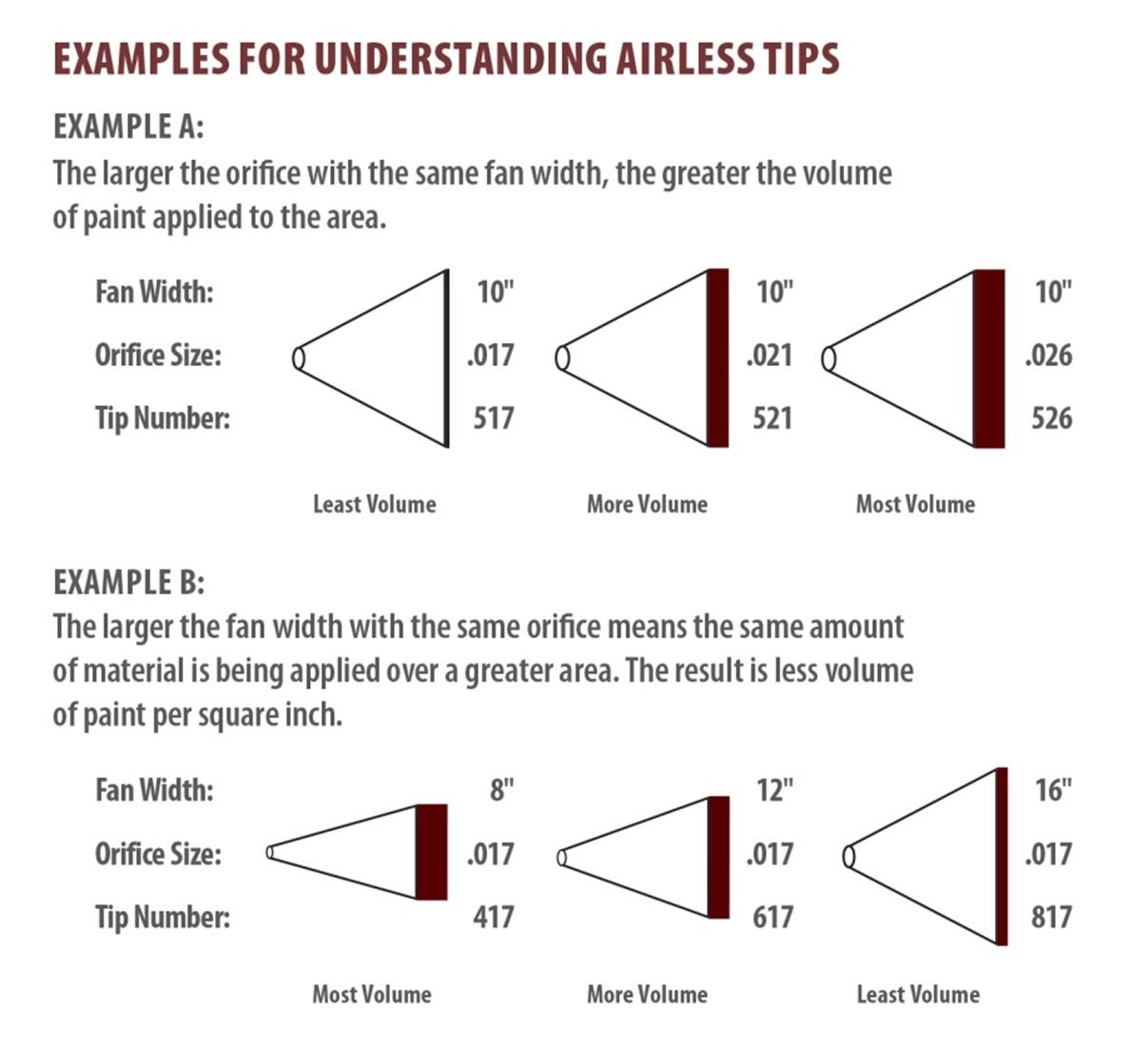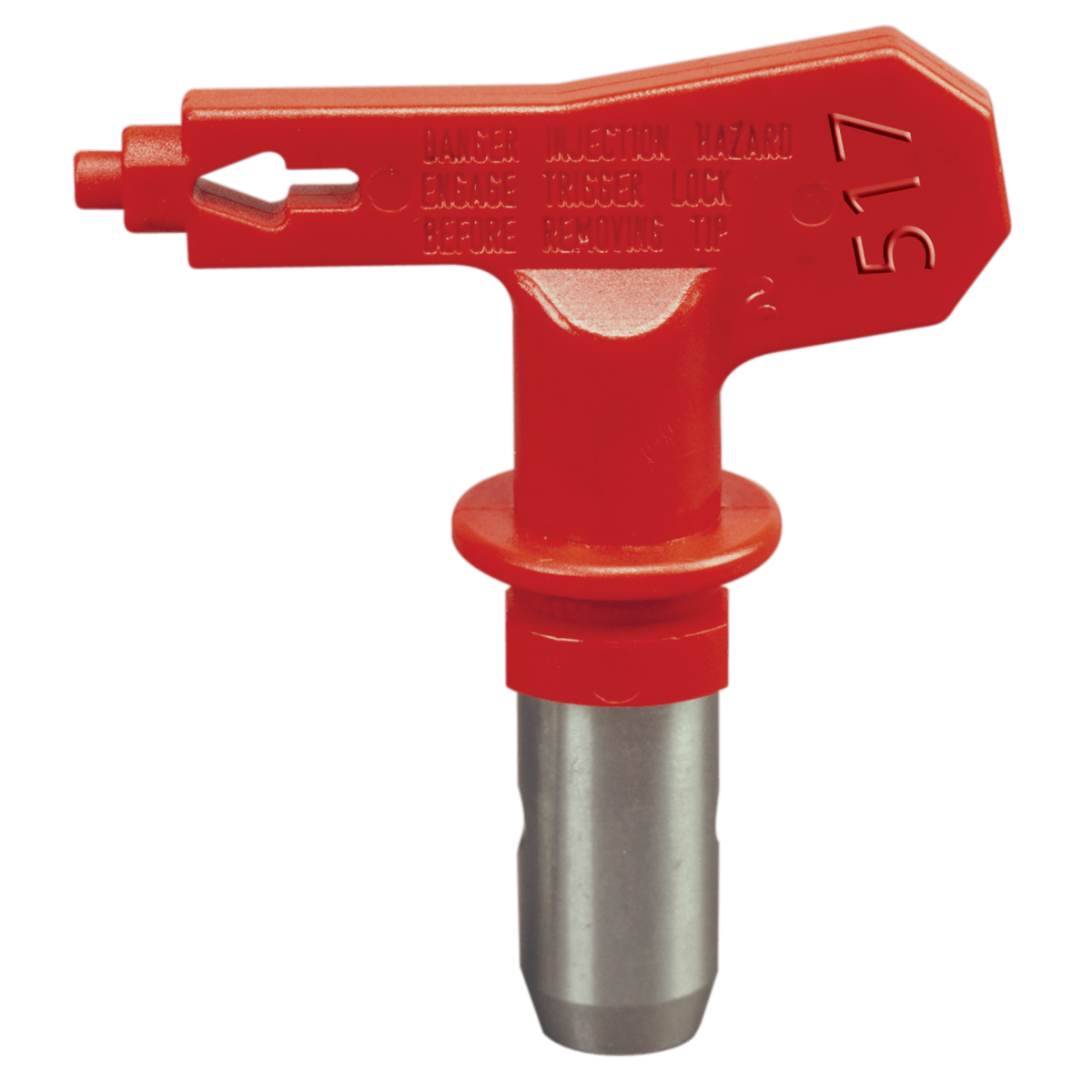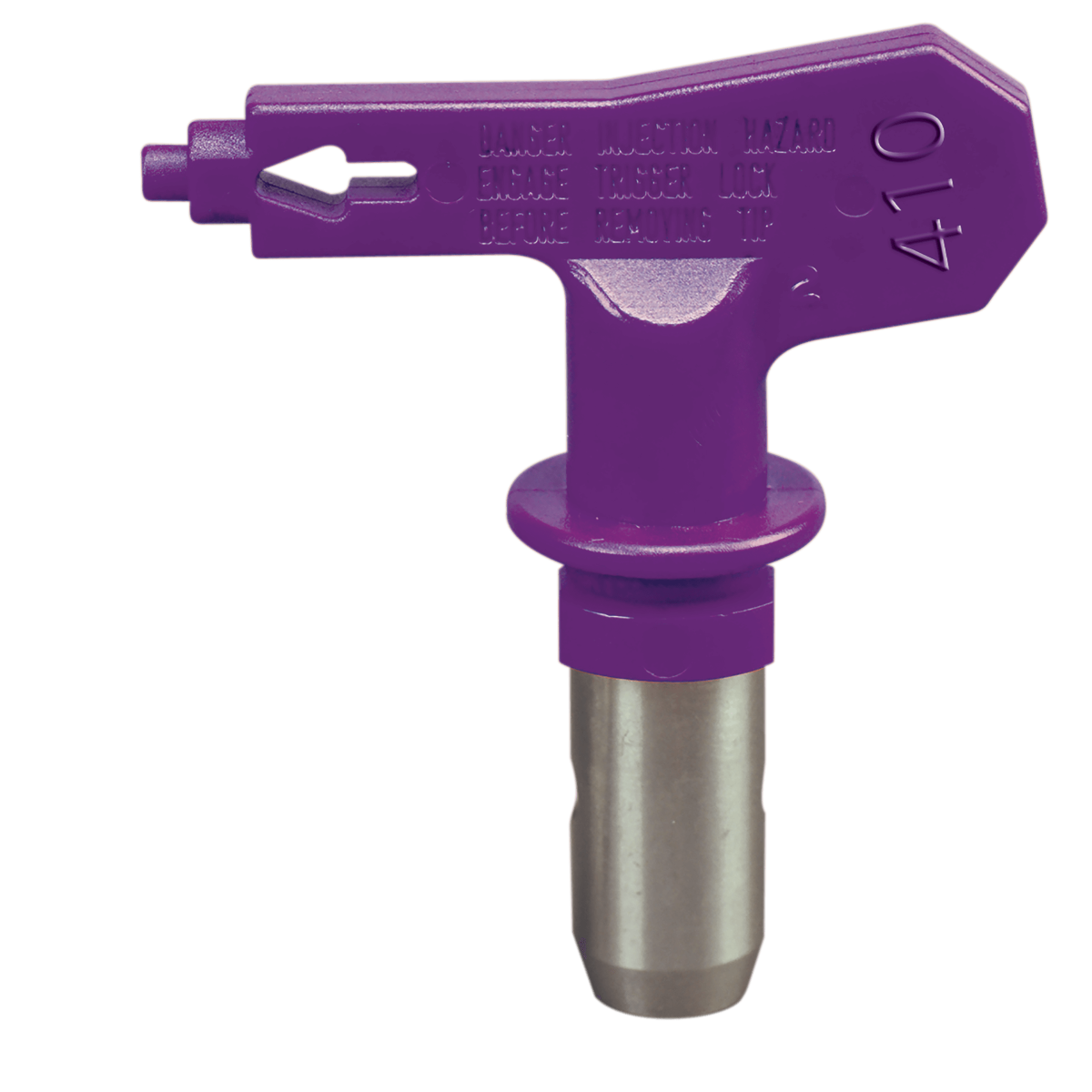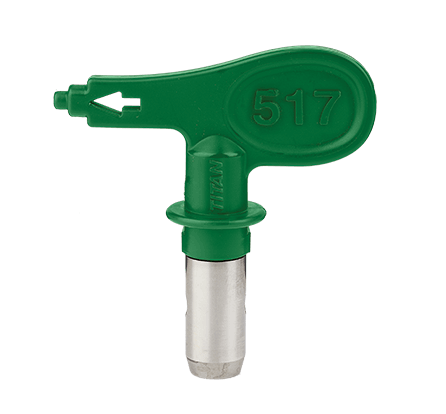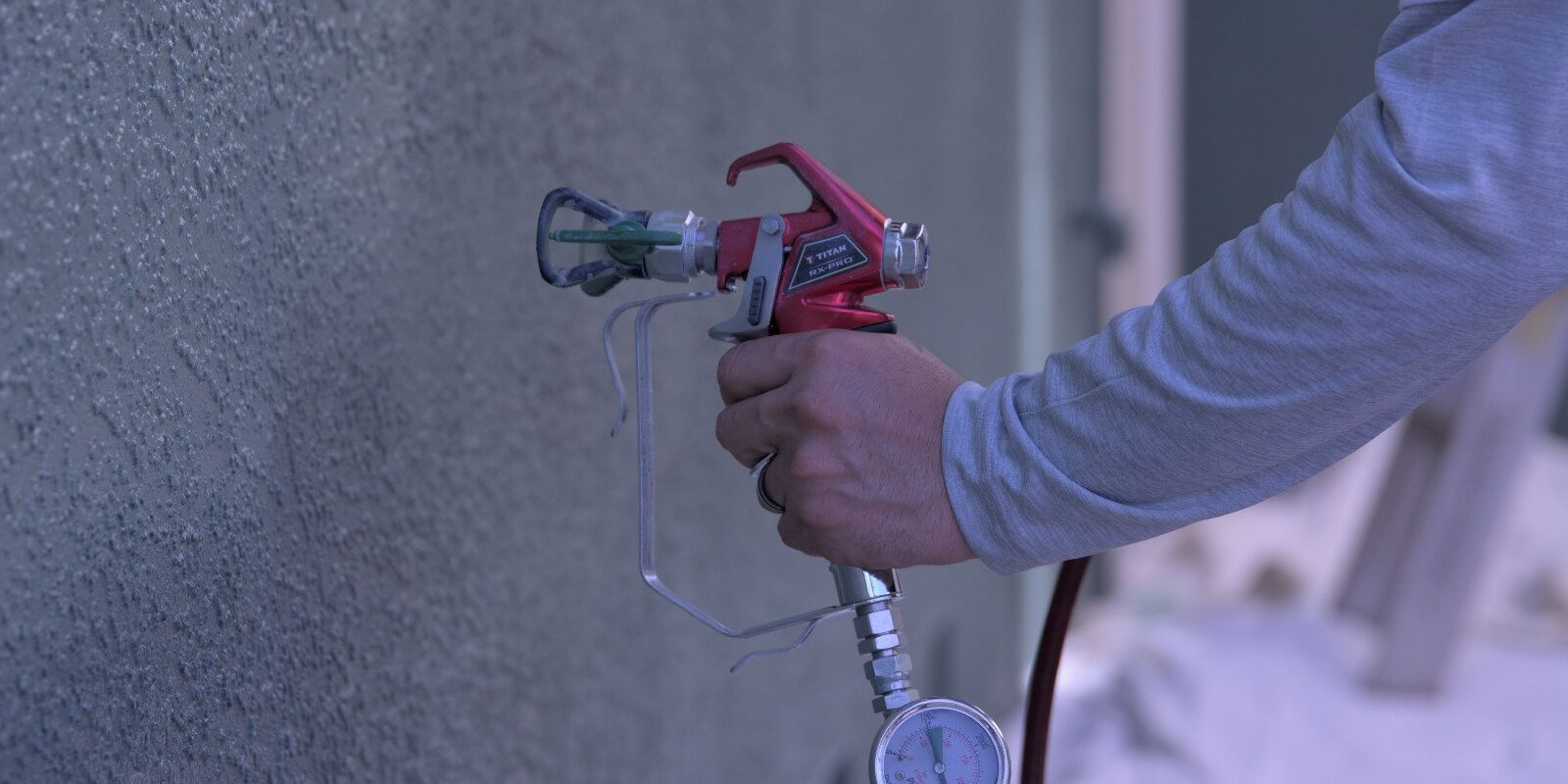
Choosing the right airless paint sprayer tip contributes greatly to the performance of your sprayer, the quality of the finish, and the success of the job. They’re incredibly important, not only because they control the width of the spray pattern and the paint flow rate, but because they ultimately determine how hard the pump should work while spraying. Spray tips are essentially the brains of the operation – so make sure you choose yours wisely.
There’s a lot that goes into that decision, from understanding the application and the type of coating you’ll be spraying to selecting the correct tip size and more. To that end, knowing how to read tip sizes is a great place to start.
Spray Tip Sizes 101
Paint sprayer tips all have size numbers that denote two specific factors – fan width and orifice size. Size numbers consist of three digits, and understanding what each digit means is key to choosing the right tip for the job.
Let’s use a 517 tip as an example:
- The first digit (5) is multiplied by two to indicate the approximate fan width (10 to 12 inches).
- The second and third digits (17) are the size of the orifice in thousandths of an inch (.017), representing the flow rate (i.e., how many gallons per minute will pass through the orifice).
The diagram below shows what happens when you change tip sizes.
In Example A, the three tips have the same fan width. As their orifice sizes increase, a greater volume of paint is applied to the 10-inch area, resulting in more paint per square inch.
Example B shows three tips that have the same orifice size (.017). As the tips’ fan widths increase, the same amount of paint is applied over a greater area, resulting in less volume of paint applied per square inch as the sizes go up.
Choosing a Tip Size
You’ll want to consider two things when deciding on a tip size – what type of surface is being painted and the coating being applied. Here’s how it works:
Fan Width: For larger surfaces like walls and ceilings, you’ll want a larger fan width for wider coverage of the area (8 to 24 inches). For smaller surfaces like deck boards, cabinets, and fences, you’ll want a smaller fan width (2 to 6 inches).
Orifice Size: Generally speaking, when the coating is thin, you’ll want a smaller orifice, and when the coating is thick, you’ll want a larger orifice. Below are recommended orifice sizes for various types of coatings, based on a typical 12-inch distance from the surface with an 8- to 12-inch fan width.
|
Types of Coatings |
Recommended Orifice Size |
|
Varnishes, Lacquers & Sanding Sealers |
0.011" |
|
Clear Shellac |
0.013" |
|
Transparent Stain & Water Sealers |
0.013" |
|
Solid Stain |
0.015" |
|
Exterior House Paints & Interior Wall Paints |
0.017" |
|
Interior & Exterior Primers |
0.019" |
|
Commercial Grade Architectural Coatings |
0.019" |
|
Dry Fall & One Coat Primer Finishes |
0.023" |
|
Field Marking Paint |
0.019" |
|
Pavement Striping |
0.023" |
|
Pigmented Waterproofers |
0.027" |
|
Elastomerics |
0.031" |
|
Block Fillers |
0.031" |
Most paint and coating manufacturers include recommended orifice sizes on the technical data sheets for their products. Look for them on the paint can or on the manufacturer’s website.
Understanding Mil Thickness
Another key consideration is the mil thickness of the coating you’re applying, which will depend on the flow rate and the speed at which your hand is moving. If your hand moves fast, the mil thickness will be less than if your hand moves slow. With that being said, you can also compensate for your hand speed by using tips with different flow rates, or GPM ratings.
By using a tip with a larger orifice, you can spray faster and achieve the same mil thickness. For instance, a .017 tip sprays .31 GPM, a .019 tip sprays .40 GPM, and a .021 tip sprays .47 GPM. With the same hand speed, a 517, 520, and 521 tip will produce the same mil thickness.
Tips really are the brains of the spraying operation, so by applying this knowledge, you can complete jobs faster and with better results – while saving time and money in the process.
Reversible vs. Fine Finish vs. HEA Spray Tips
Three of the most effective and commonly used types of spray tips are reversible, fine finish, and high-efficiency airless (HEA).
Reversible tips are primarily designed for ease of use, and supplemental filtration systems are not required. When in spraying mode, the tip is facing forward. When a blockage enters the system, you can reverse the tip by turning it 180 degrees, pull the trigger to spray the blockage out, and turn the tip back 180 degrees to continue working.
Titan’s SC-6+ reversible spray tip has a long-lasting orifice that provides more usable life while achieving up to a 22% wider fan pattern. It sprays a consistent film thickness while wasting less paint and comes in a wide variety of sizes used to spray coatings such as latex paint in residential or commercial applications.
Fine finish spray tips are designed for projects such as cabinetry, woodwork, and metal, and are perfect for use with stains, lacquers, light-bodied clear finishes, and other fine finish materials. The SC-6+ Synergy fine finish tip from Titan achieves a particle size up to 27% smaller than a standard tip and is pressure rated at 5000 PSI.
HEA tips are known for their revolutionary low-pressure technology, capable of putting paint in its place while decreasing overspray and extending the life of the pump. Titan’s HEA tips are optimized to spray all architectural paints and coatings at 1000 PSI at production speed, decreasing overspray by up to 55% to allow you to keep on spraying.
Shop our collection of airless spray tips to find the perfect solution for your next project.
Spray Smarter with Titan Tool
Boost every job with the unbeatable power, speed, and control of a Titan airless paint sprayer, elevated even further when paired with our industry-leading collection of smart, easy-to-use accessories. Built for maximum durability, Titan is the only business choice for best-in-class ROI and dedicated support whenever you need it.
Browse our electric airless paint sprayers, gas airless paint sprayers, or collection of parts and accessories to start experiencing better results, every time you pull the trigger.


